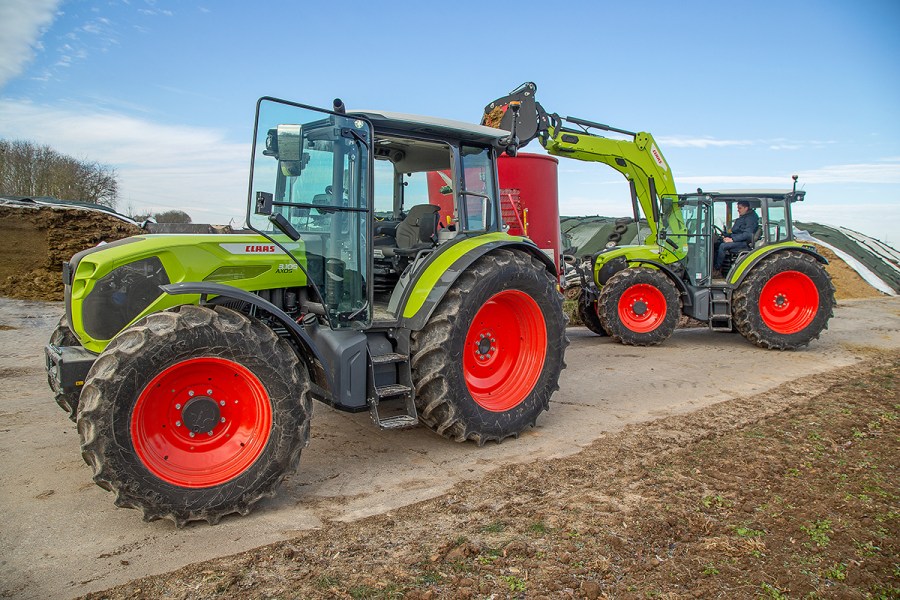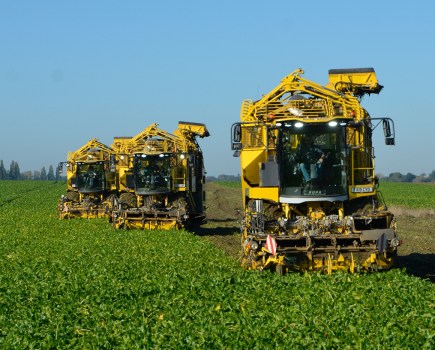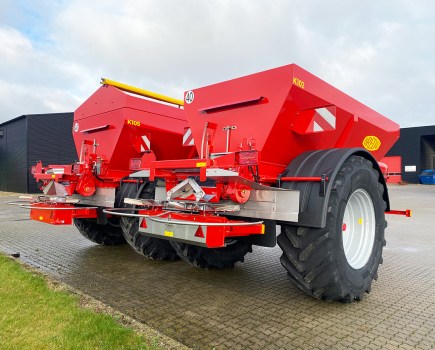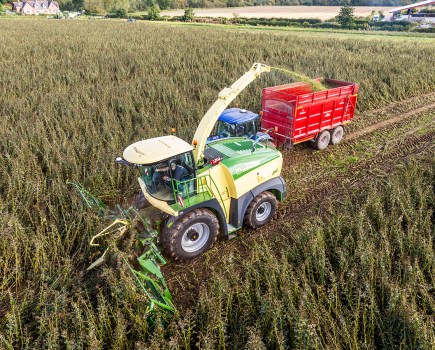The new Claas Axos 3 series is fresh from the ground up and envisaged as an all-rounder for the traditional mixed family farm. We catch up with the new range.
KEEPING IT BRIEF
- Four new Axos 3 models (95 to 120hp)
- Aimed at mixed farms and livestock units
- Manufactured by Carraro Agritalia in Italy
A four-model range runs from the Axos 3.95 (93hp) to the 3.120 (120hp), and continues the implementation of Claas’s new numbering system introduced with the Xerion 12.
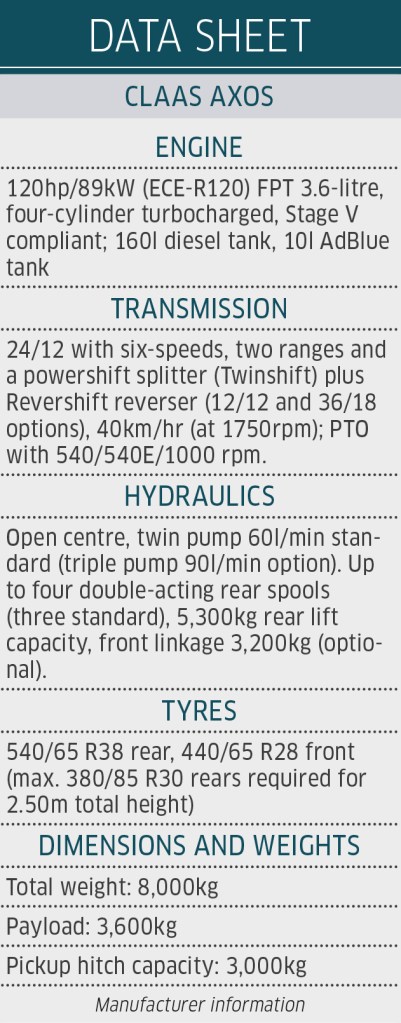
It slots into the lineup above the Axos 200, effectively replaces the SDF-derived Atos which went out of production in 2021, and although overlapping with the Le Mans-made Arion 400 offers a lower-spec alternative at a more attractive price. Although unique to Claas, Axos 3 production has been outsourced to Carraro Agritalia in Italy which also makes the Axos 200.
Power for all models is from a 3.6l, four-cylinder FPT (Fiat Powertrain) unit, the basic block and radiators being taken from the Axos 200, with DOC, DPF and SCR. The bonnet level is quite high and straight, not ideal for maximising visibility but there is a lot going on underneath and the 10l Adblue tank is housed right at the front.
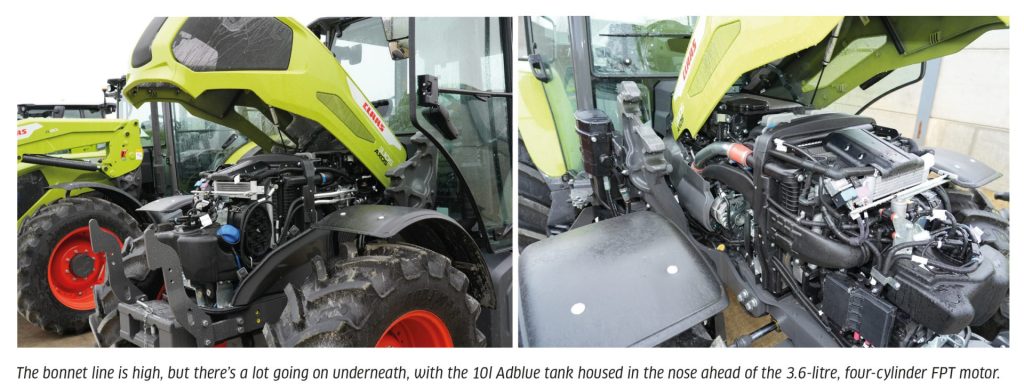
Two selectable engine speed memory settings, provided as standard, are selected using push buttons. Two more push buttons are used to set the speed itself, one to increase revs and one to decrease.
A six-speed mechanical transmission is combined with a powershift splitter (Twinshift) and clutchless reverser (Revershift) along with two mechanical ranges to provide 24F/12R speeds or an extra creeper range for 36F/18R. This is operated in a very conventional way using a gear lever, with two buttons to control the splitter, but unlike Renaults of old, famous for their long but well-placed levers, changing ranges necessitates awkwardly reaching down to a short stubby lever at floor level.
Smart Stop, a useful feature brought over from larger models allowing the operator to stop and start the tractor using just the footbrake pedals, is optional, as is an electronic park brake. A fully mechanical 12F/12R transmission option will also become available later in the year for those less fussed about forward ratios.
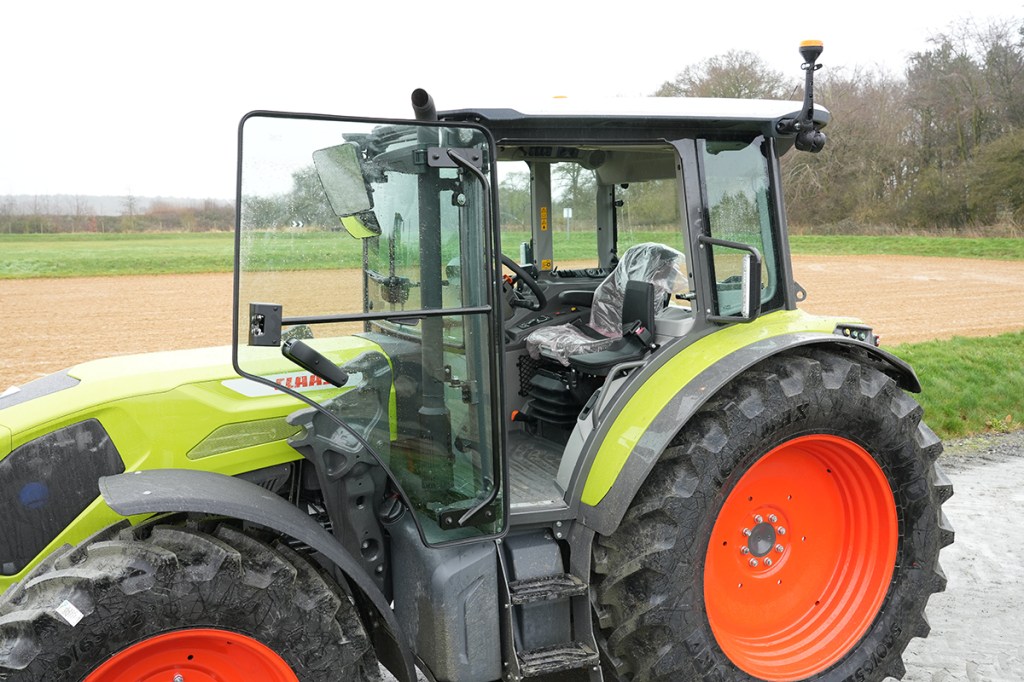
Cab doors open forwards
The new larger cab is a big design feature and welcomes back forward opening doors, a Renault-inspired hallmark that was last seen on the Axos 300 series which disappeared in 2015. Since then, it has been repeatedly requested by customers, according to Claas, and is now back albeit in an updated form. The doors can be latched in the open position, useful when hopping on and off for carrying-out livestock activities and yard work, with latch-releases on both the inside of the door threshold and now also outside behind the door itself. When in this position they don’t interfere with the clear passage of a loader.
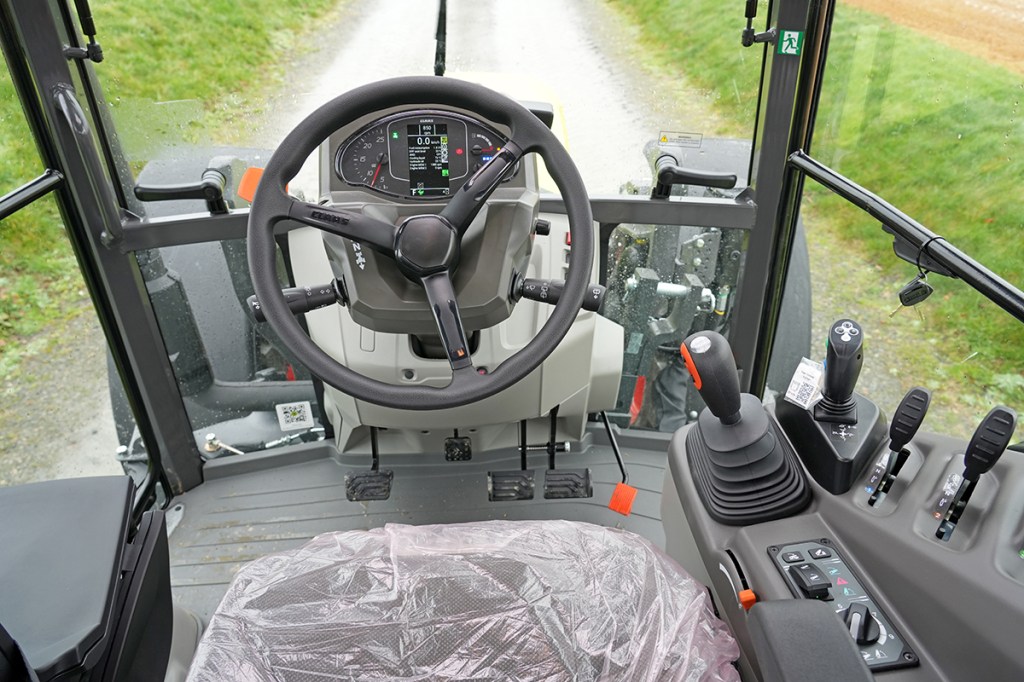
The pivoting steering column is a nice feature for a smaller tractor. The front window opens, but is awkward to shut, and with enough ventilation options already provided it’s unlikely to be used by UK operators, unless they want to feel like an Alpine farmer on a bright warm day perhaps.
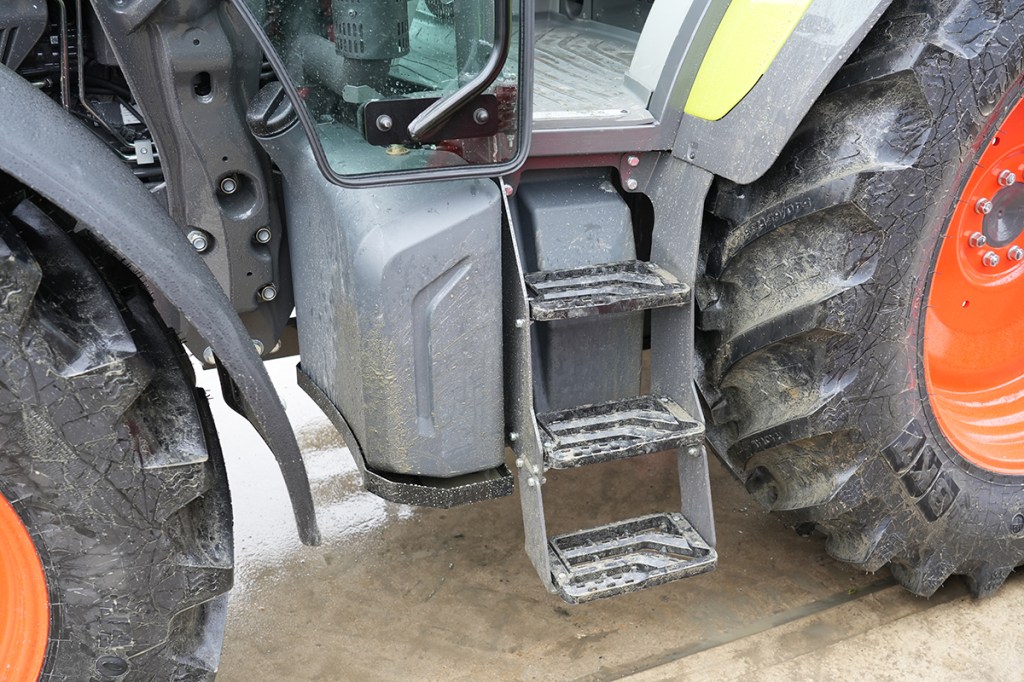
A low overall cab height of just 2.50m can be achieved when fitted with 30” rear wheels, an important consideration for farms with low buildings. Inside the controls are all new, and those accustomed to a Ceres or Celtis will find very little familiar about this new spiritual successor.
Loader suitability
Clearly loader work is considered prime Axos 3 territory by the manufacturer. A transparent sunroof can be specified for better loader visibility and Dynamic Steering, which reduces lock to lock turns of the steering wheel, is available as an option. When fitted with an MX-manufactured Claas loader the E-Pilot S electronic joystick control comes as standard, and is a joy to use. The tractor’s open-centre hydraulic system offers 60l/min as standard from two pumps, or 90l/min from an optional triple pump arrangement.
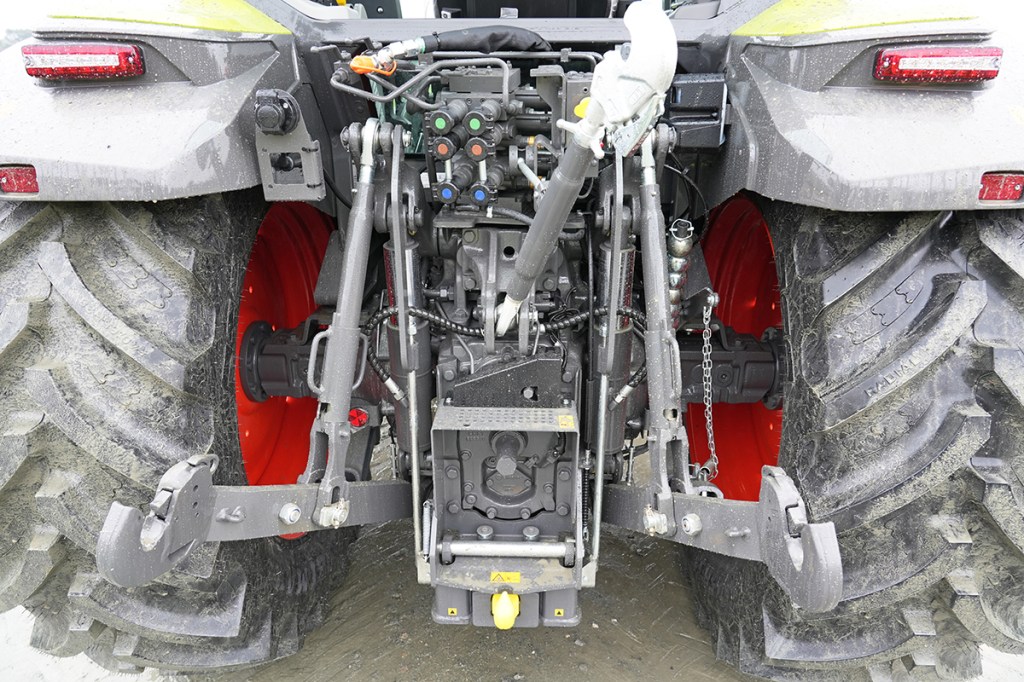
Speaking of hydraulics, three mechanical spool valves are standard, operated via simple enough levers, with a fourth optional. But control of the 5.30t capacity three-point linkage is electronic using a separate sub-panel behind the gear lever, although parameters such as min/max height are controlled using a separate trio of dials out of the way right at the back corner of the cab. A 3.20t front linkage and front pto can also be specified.
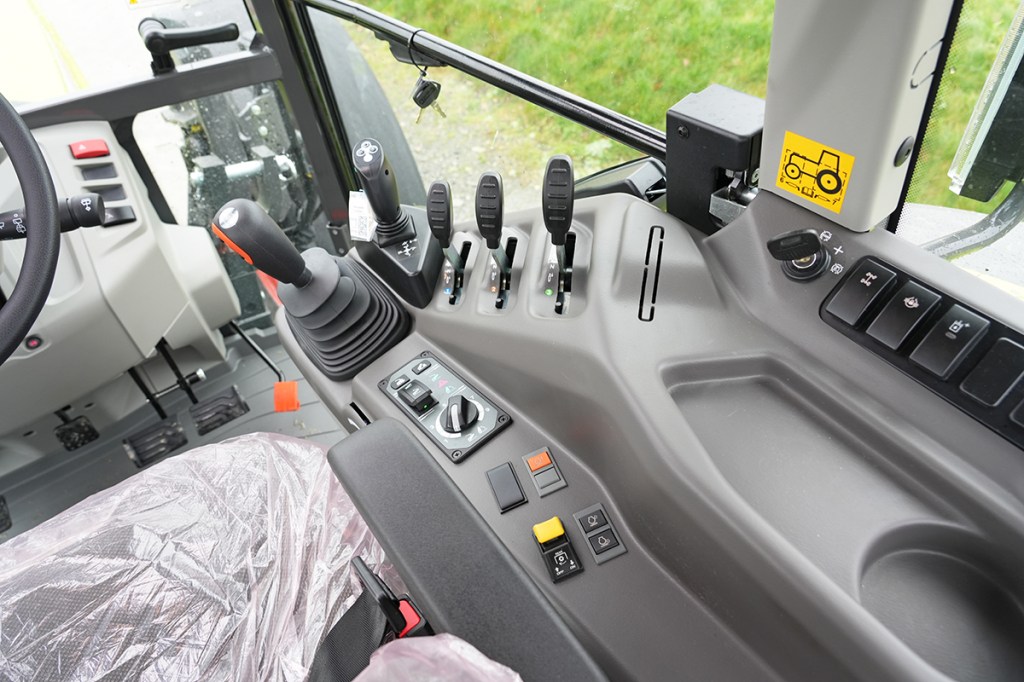
Compared to the Atos predecessor, larger rear tyres can be fitted, up to 1.60m diameter meaning a 320/85 R38 or 540/65 R38 is suitable. When specified on taller rubber the Axos 3 gains an extra cab step, three rather than two, to accommodate the additional height. Overall payload has been increased considerably too, up to 3.60t.
On the service and maintenance side of things, service intervals have been increased by 100 hours to 600 for the engine and 1200 for the transmission. The 160l fuel tank has also been moved to the nearside with an easily accessible filler and like the rest of the Claas range the tractor is fully HVO biodiesel compatible.
Summary
With the Axos 3, Claas aims to regain some of the stockman-friendly features of the previous Ceres, Celtis and Axos lineage. Although the new tractor can’t really be classed as a direct descendent, its more livestock-orientated spec generally achieves this goal without too much excitement or drama.
Chris Lockwood
For more up-to-date farming news click here and subscribe now to profi and save.

